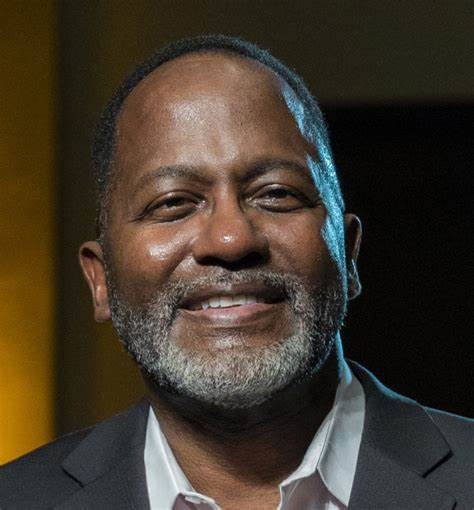In the fall of 2022, before classes had begun at Carnegie Mellon University, Simon Cullen sent a survey to students enrolled in his philosophy course, called “Dangerous Ideas in Science and Society.” He was curious about what was driving the massive popularity of the class, in which students explore multiple sides of hot-button issues like abortion, guns and immigration.
“Why are you taking this class?” was the first survey question.
The answers from students astonished him. Learning and discussing ideas not allowed in their high school classrooms was one common answer. Speaking openly about controversial topics without getting attacked was another.
Students get plenty of practice doing both of these things in Cullen’s class. But they also learn how to visualize, or map, arguments using informal reasoning. Cullen, an assistant teaching professor at Carnegie Mellon, teaches students how to diagram their arguments with supporting reasons and objections.
At a time when concerns are mounting that sizable shares of students are intolerant of opposing views and graduating without critical thinking skills, Warren and Cullen are among a growing number of university faculty who want to teach students how to argue with civility.
This means teaching them how to listen and break complicated ideas down into bite-sized pieces through argument maps. Related to diagrams, these visual tools are used to illustrate the relationships between ideas and information. In the same way, argument maps visually render the reasons that build up to a claim. A more robust argument map includes opposing arguments, assumptions, expert opinions and accepted facts.
Let’s say two people disagree about something. If they work side by side building a map of one person’s position on the topic, the process can reveal the nuanced root differences in their thinking. This can lead to better understanding, said Dona Warren, philosophy professor at the University of Wisconsin-Stevens Point.
“Sometimes that’s enough,” she said. “It allows the other person to feel that someone on the other side took the time to understand them.”
It’s important to know how to argue with respect, Warren and Cullen said, because doing so helps students understand their own opinions. It also helps them develop empathy for others.
“It’s absolutely a life skill,” Warren said.
Slowing down thinking
For years, Warren has started the first day of her course in critical thinking by asking students what they wanted to learn in the class.
“Ten or 15 years ago they were saying that they wanted to be able to win an argument,” Warren said. “Now, they say, ‘I want to be able to disagree in a way that doesn’t nuke the relationship.’”
Warren’s course also focuses on building argument maps. She admitted that the process isn’t easy. Internalizing the sequencing of reasons and objections takes a surprising amount of practice, she said.
But the benefit is that students learn how to defuse heated debate. Once there is a visual map of an argument, people stop fighting with each other and begin focusing on their differing opinions, as represented in the map.
“It’s one thing to tell people, ‘Don’t attack the person. Look at what they’re saying.’ But unless we give people the tools to look at what they’re saying, how do they begin?” Warren said.
Argument maps evolved out of concept mapping, Warren said, which emerged in science education in the 1970s.
An argument map looks like a family tree, but instead of two parents at the top with their offspring below, there’s a claim, like “the U.S. should outlaw combat rifles.” Branching off below are supporting reasons for the claim — “innocent Americans have been slaughtered by gun violence” — and objections — “the second amendment gives us the ‘right to bear arms.’”
With some claims, it may seem obvious what pro and con arguments a person could make.
But the point of teaching argument mapping is to help students slow down their thinking when it comes to controversial topics and, possibly, consider another point of view.
Having ‘productive and illuminating’ disagreements
If it’s true that many students don’t master critical thinking skills in college, that doesn’t mean they shy away from third-rail issues.
But students also want to be able to explore all sides of knotty issues, Cullen said. The second year he taught his “Dangerous Ideas” course, hundreds of students were waitlisted to enroll.
In surveys administered at the end of the course, nearly all students reported that they were more open to talking to people they disagreed with than they were at the beginning of the semester.
Nearly all also said they were less supportive of censoring views they find problematic. Ironically, students said that the “Dangerous Ideas” course was a safer space than other classes for talking about controversial subjects.
“After taking this course and with no doubt, I am no longer afraid to venture into sensitive topics with the looming fear of being misinterpreted, and, god forbid, being demonized for holding a specific view,” one student wrote to Cullen in an end-of-semester reflection.
Students want to dig into messy, controversial subjects, said Aidan Kestigian, vice president of ThinkerAnalytix, an education nonprofit spun out of Harvard University’s philosophy department. ThinkerAnalytix develops online tools and training to help universities teach argument mapping and “sympathetic empathy,” a method of “precise,” or very close, listening.
“Students are ready and eager,” she said. “Let’s make sure they have the tools they need to have precise and clear disagreements. Disagreement can be productive and illuminating, even if nobody changes their minds.”
As a former professor of logic and political philosophy, Kestigian noticed that her students weren’t able to repeat back an argument immediately after reading it.
“It was pretty hard for them to listen carefully, accurately respond and place their contributions in context,” she said. They also had trouble engaging in disagreements during class discussions.
“Some of that is a critical thinking deficit, but it’s also about knowing what their claims are and how they relate to each other,” she said.
It isn’t necessarily college students’ fault if they can’t follow complex arguments.
These skills aren’t often taught in high school, said Anne Sanderson, executive director of ThinkerAnalytix.
Sanderson taught high school English for 25 years but “never taught critical thinking specifically.” Later, in a course at Harvard’s Graduate School of Education, she taught high school teachers how to teach the writing of arguments.
ThinkerAnalytix formed to expand this work and help educators teach critical thinking and productive disagreement skills. They offer webinars for educators and online learning tools for students focused on argument mapping and precise listening.
For Cullen, the responses he gets to his course are the best indicators that students want to learn these skills.
“They’re initially scared to talk,” he said, “but then they realize how interesting the diversity of human opinion is.”
#college #students #learn #debate #heated










